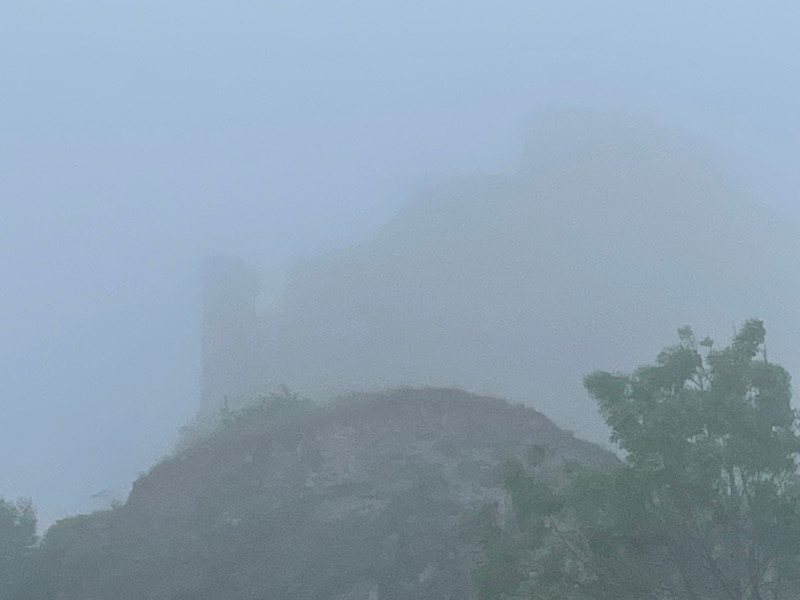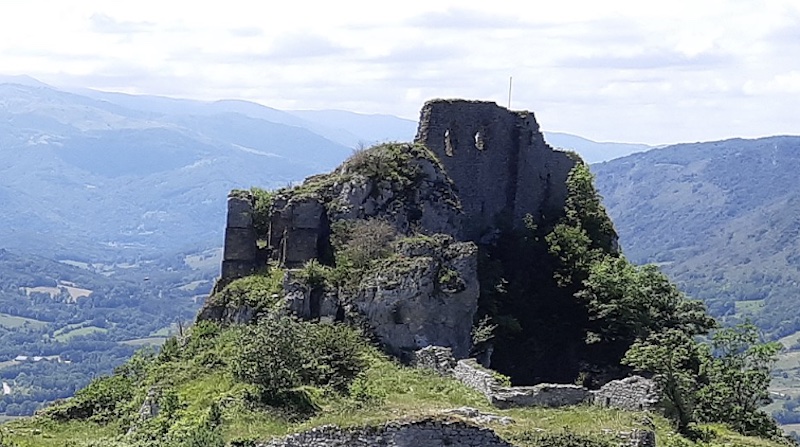Our Blog - Quick Pyrenees Trip
We had a couple free days and so we headed to the Pyrenees again. There were a few things we wanted to see, so we went down for a couple days. It was a bit cloudy and overcast for the trip, but we only got rain the last day.
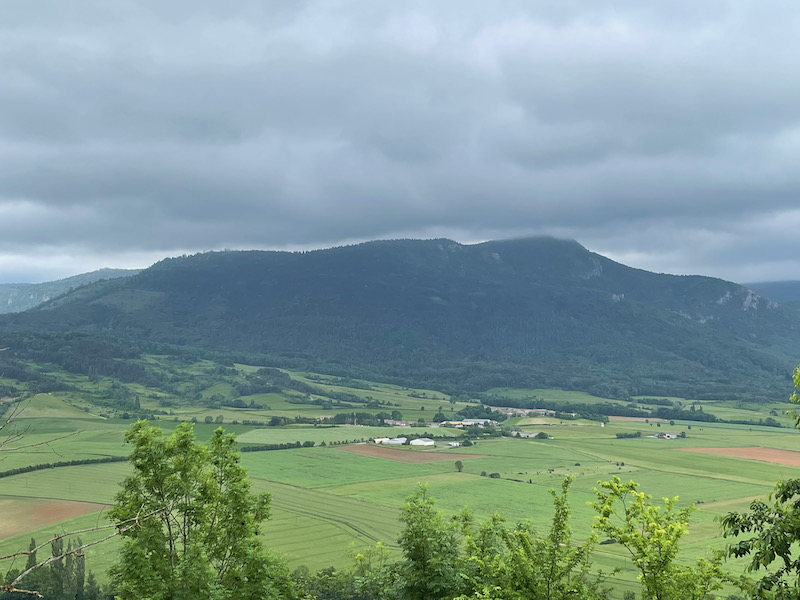
First stop was the Château de Puivert. The first mention of a castle/chateau here was in 1170, belonging to the Congost family. Unfortunately for them, they were Cathars and were accused of being heretics during the Albigensian crusade. Most of that castle was destroyed leaving only a few sections of the walls. Fast forward to the 14th century and a new castle was built. In various places, the coat of arms of the family can still be seen.
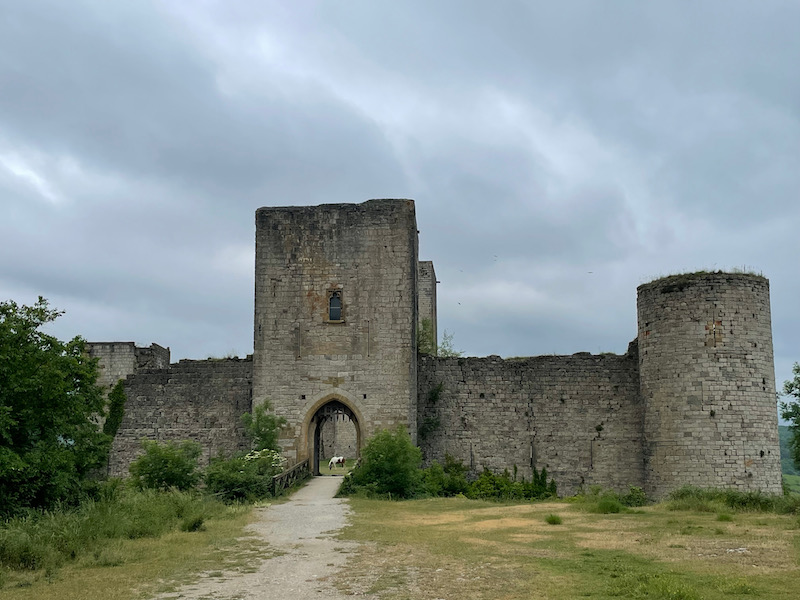
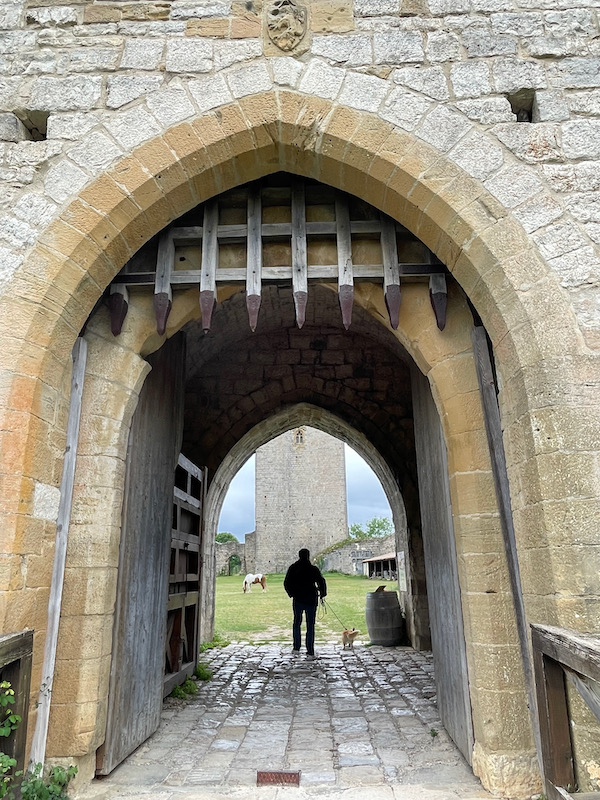
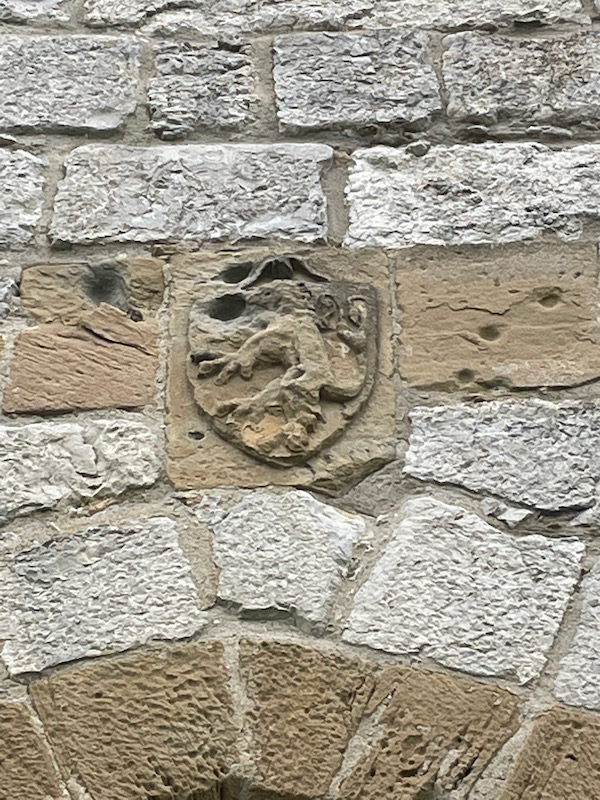

Once inside the main gate, we took a glance around the property. There are 4 original towers and the keep still standing, including several round towers and a square tower. You can also see what is left of the Donjon, which was behind the keep.
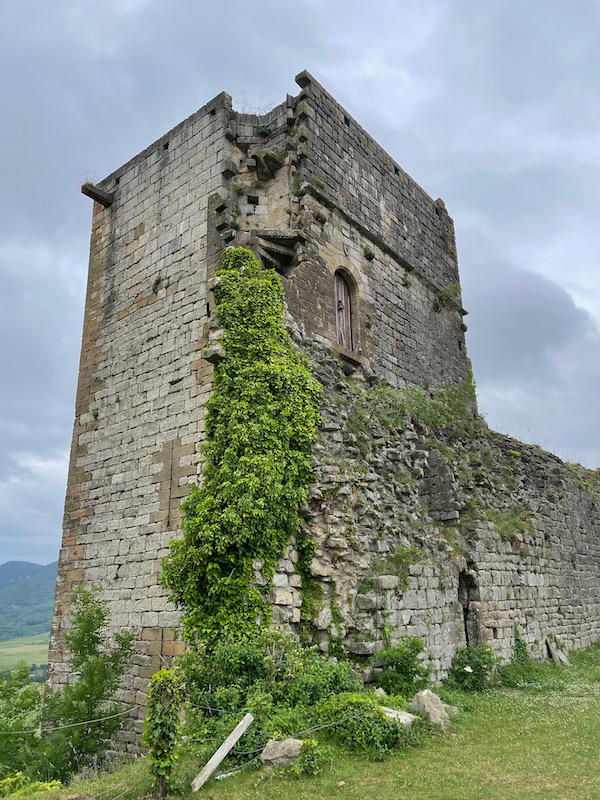

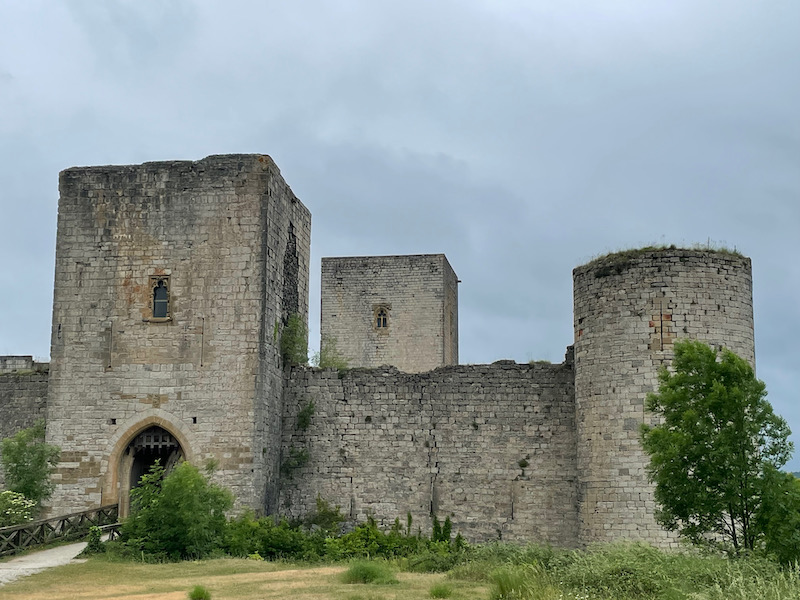
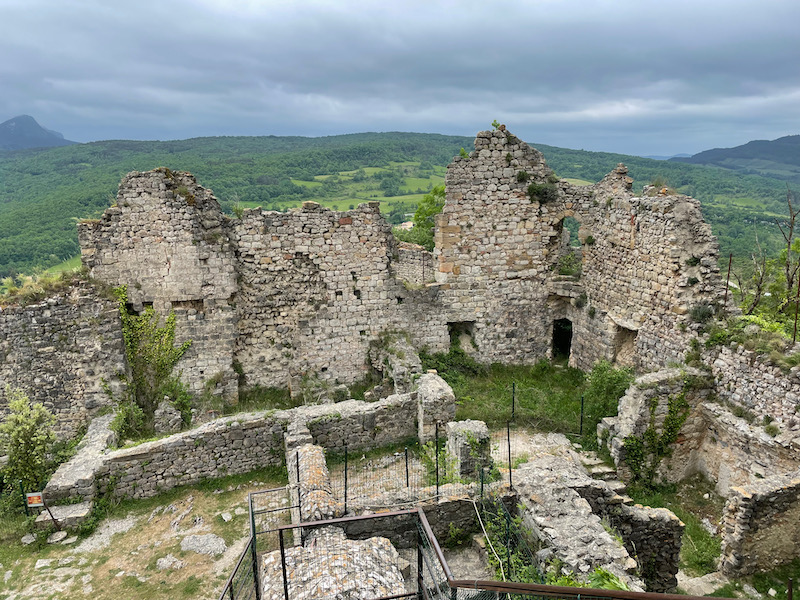
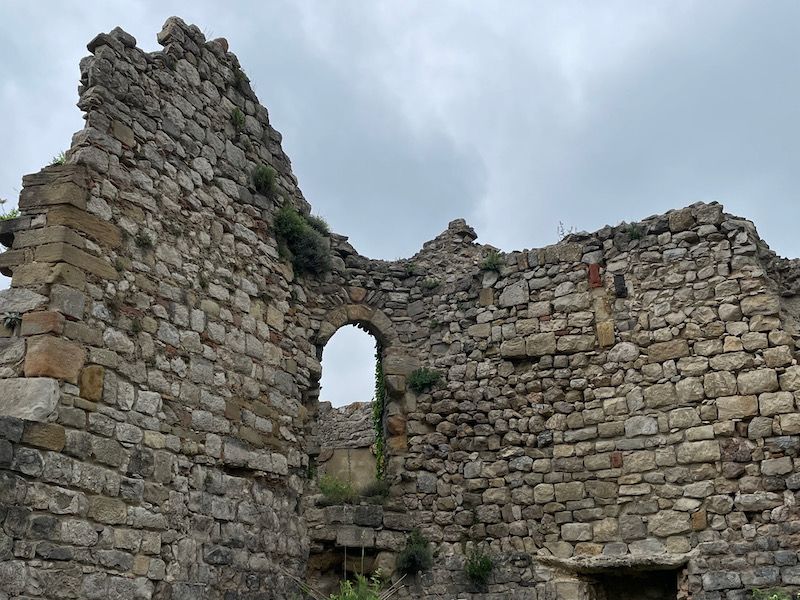
The keep is the best preserved part within the castle and in the 14th century, this would have been used exclusively for entertaining. There are 4 levels: the ground floor (that we didn't go into) and then 3 additional levels that we visited. On the 2nd level, you can see 3 doors: 2 of them with staircases that went up to the 3rd and 4th levels, and then the entry to the 2nd level.
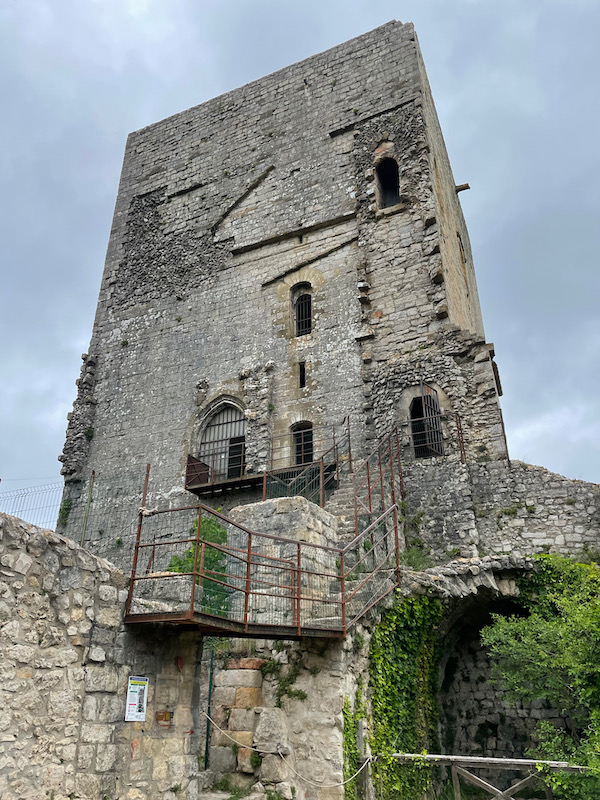
On the 2nd level is called the "guard room". While you would think that this was used for defense (like an armory), it was not. It was more like a library or study.
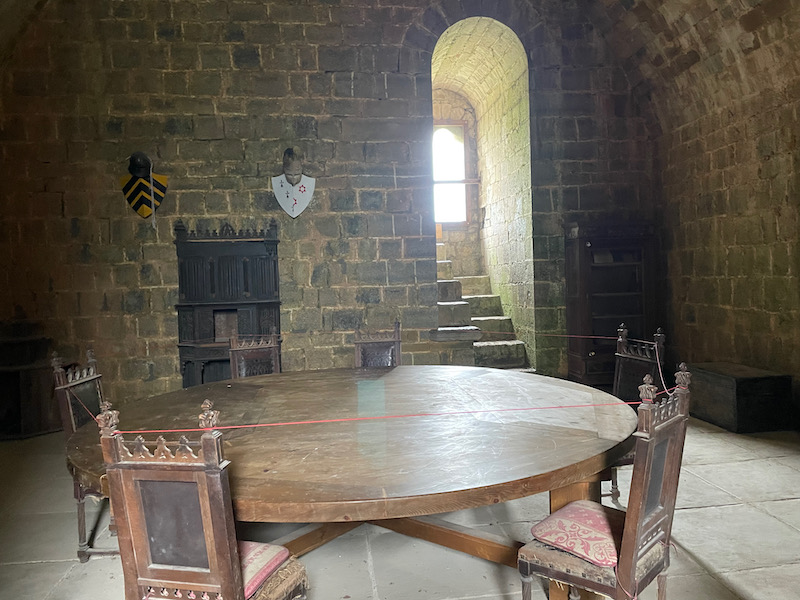

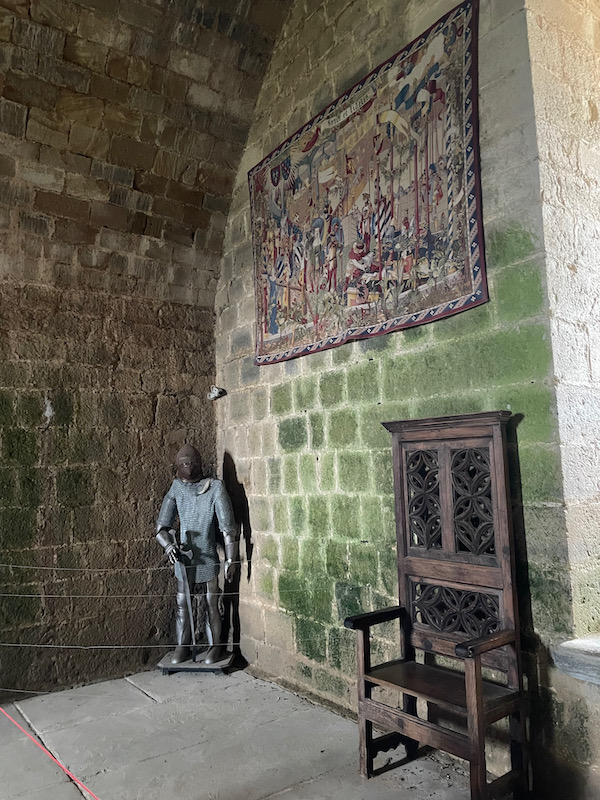
Then up to the next level, which is the chapel. From the outside, I grabbed a picture of one of the windows in the chapel. The chapel has a very high ceiling and the color of the vault is due to the natural oxidizing of the sandstone that is used. They had a few nice tapestries hanging, and you can still make out the faces on the bases of the ribs.
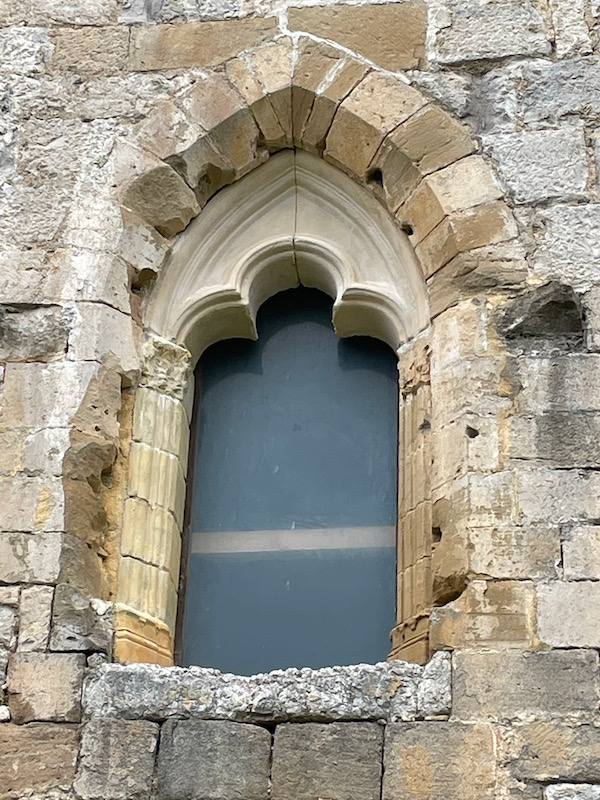
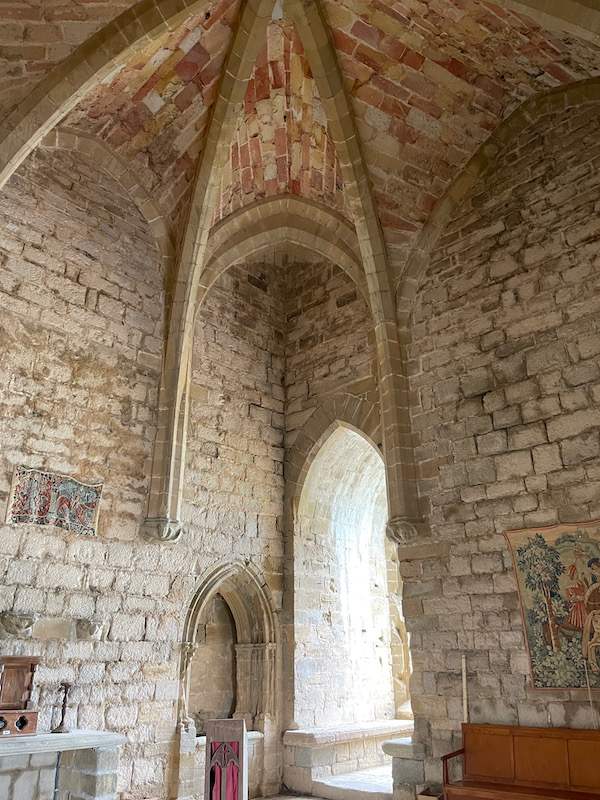


The top floor is the musicians room. This was a ceremonial room also with a vaulted ceiling. The 8 bases of the vaults are sculpted with figures playing musical instruments: bagpipes, flute, tambourine, rebec (like a violin), lute, guiterne (like a small guitar), portable organ, psaltery (in the zither family), and bowed fiddle.
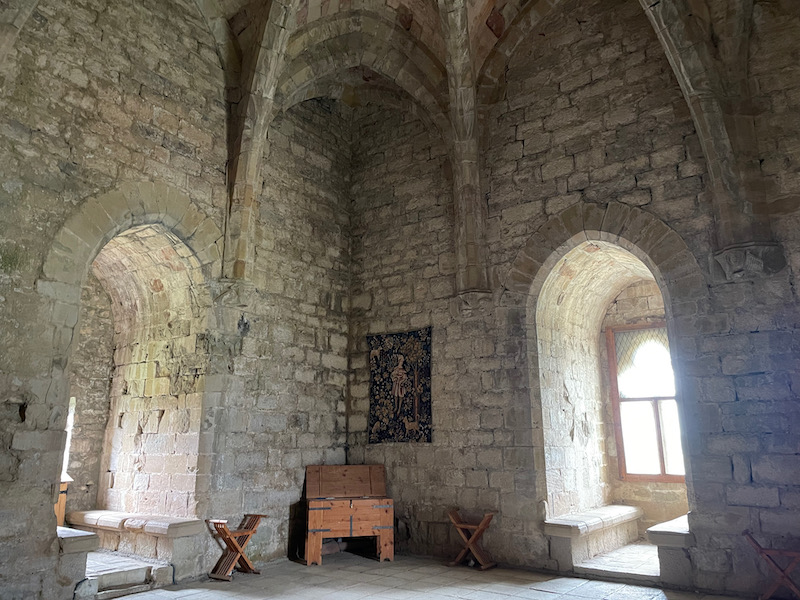

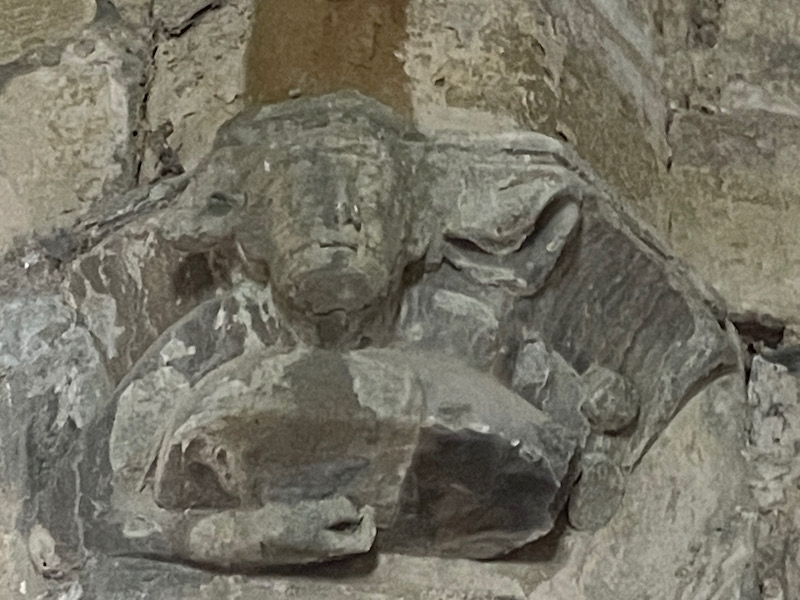


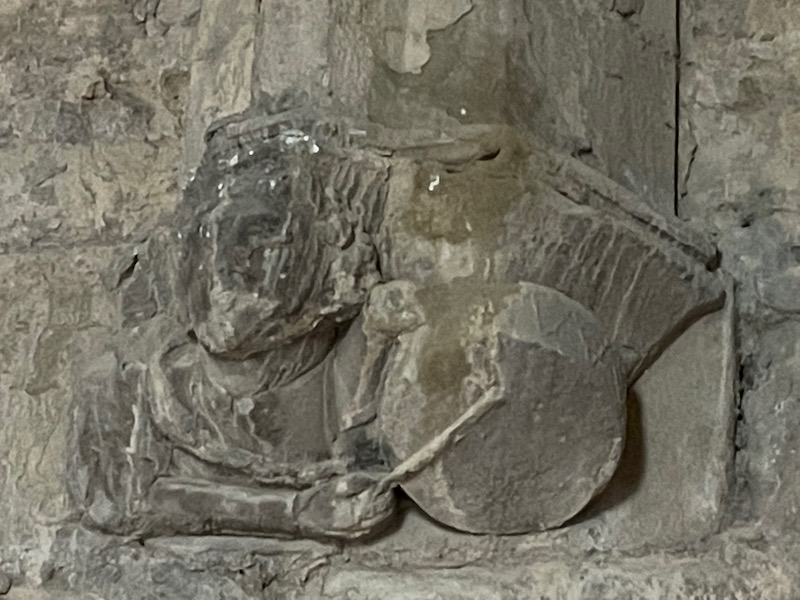
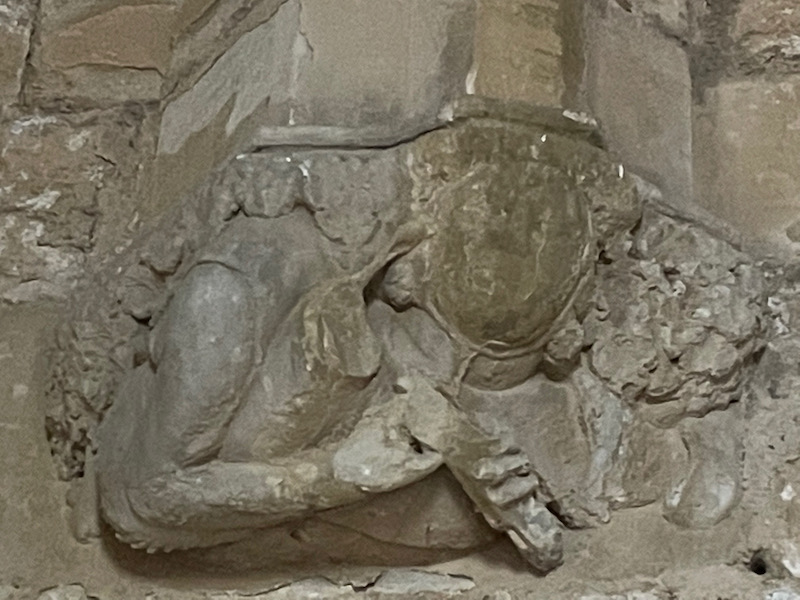
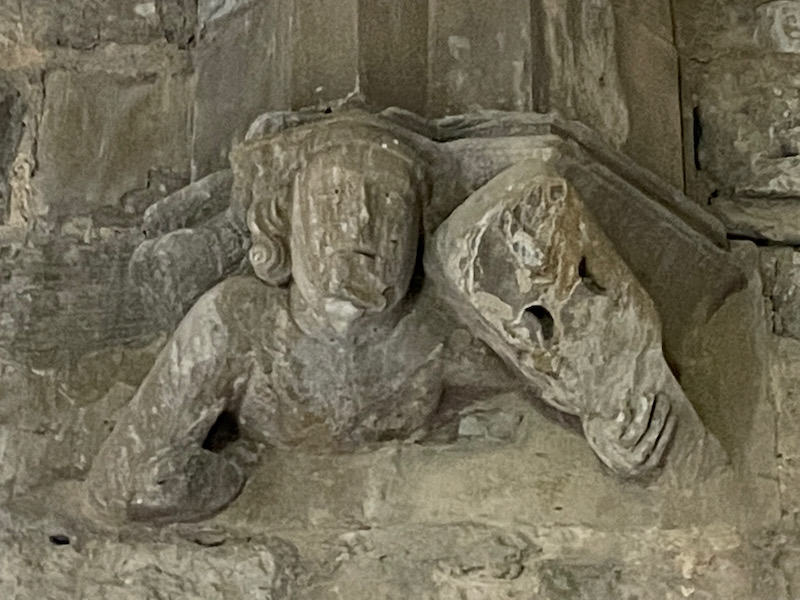
A piece of trivia: the castle is privately owned and has been used for several film shoots including The Ninth Gate, which is a Roman Polanski film staring Johnny Depp. While most of the film was shot in other locations, the castle can be seen in the closing scenes of the film.
The ruins of the Château de Montségur are perched on a cliff at about 3,900 feet. While you can drive most of the way up there, the castle itself is about 500 feet above the level of the road and it is a pretty hefty hike. The earliest signs of human settlement in the area date back to the Stone age, and there was a very early castle here, prior to the 1200's. In 1204, a new castle was built here that became a center for the Cathars and home to a Cathar theologian. By 1241, it is estimated that around 500 people were living on the site. There was a 9-month siege of the castle that ended when the castle surrendered in March 1244. Approximately 220 Cathars were burned en masse in a bonfire at the foot of the hill when they refused to renounce their faith. We started the trek up in a haze.


Based on the location, I would never be able to really give you a good picture of the whole thing, so I found one on the Internet that was taken from above. We walked up the path that runs up the middle of the picture from the bottom and entered in the opening that you see facing you (with the wooden platform).
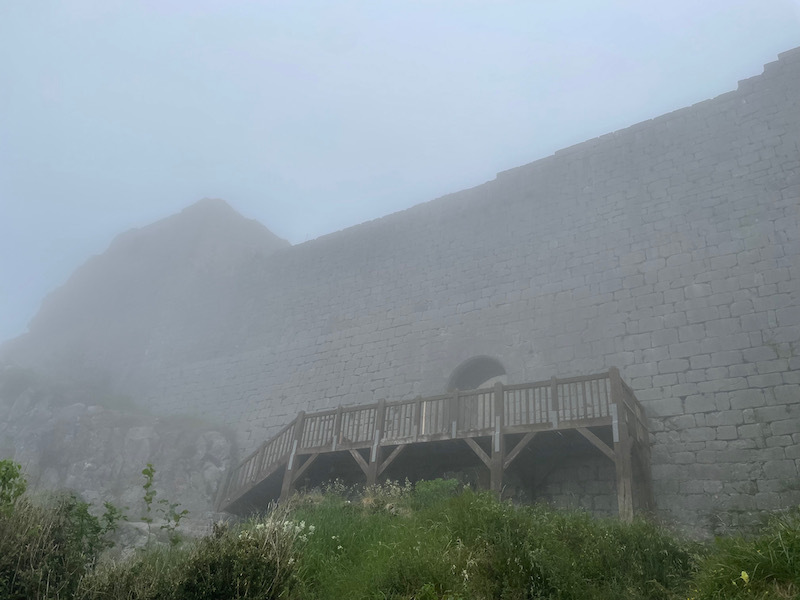
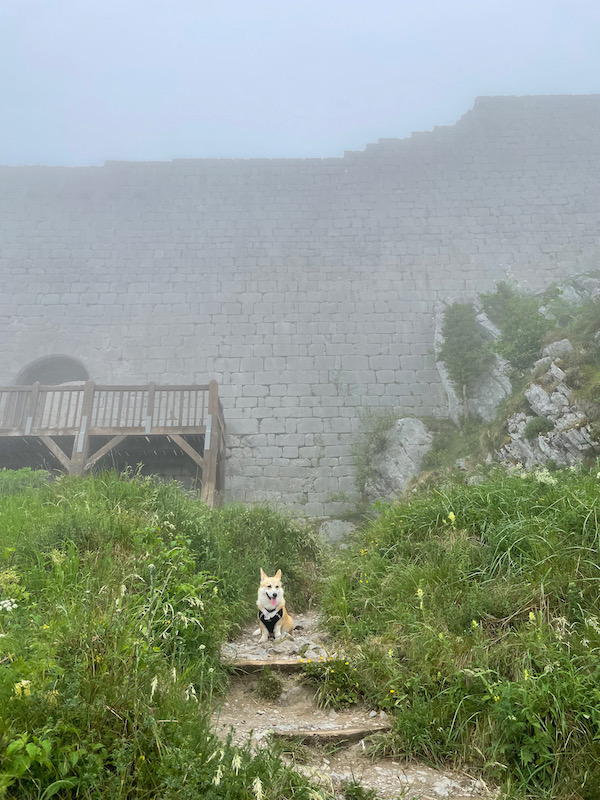

Once you are inside, it is shaped similar to a long rectangle. You can clearly see how parts of the walls are built on top of the rocks.


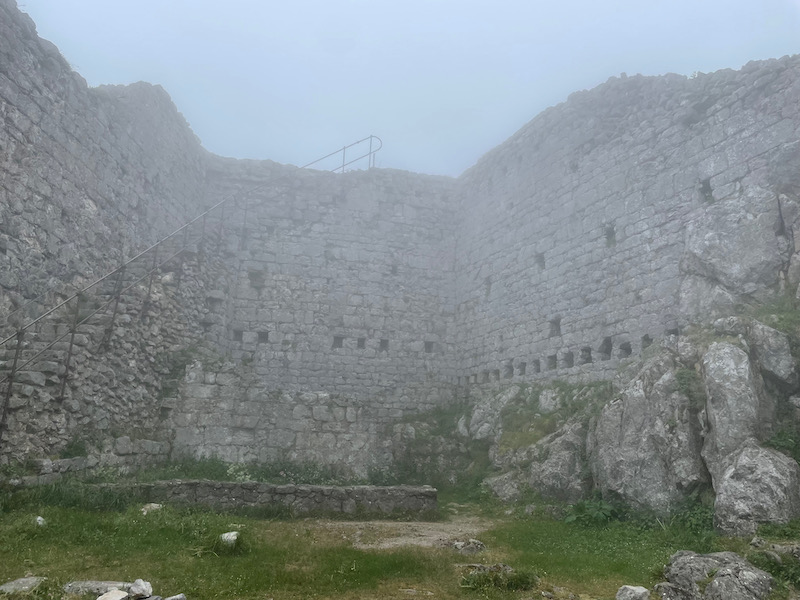

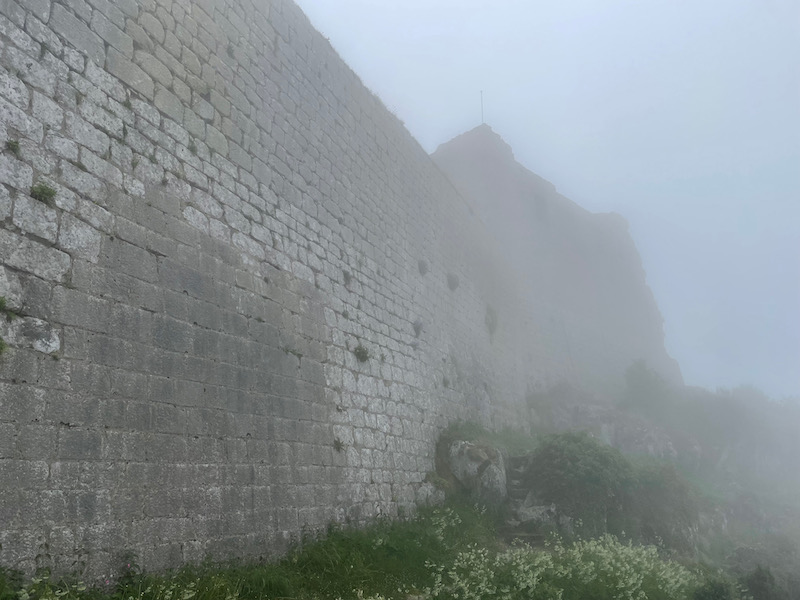
Here is a drawing of what it would have looked like in its heyday. You can see the walls and then the building on the left side. The high defensive walls and its location on the top of the cliff made it almost impossible to breech. Instead, these castles were normally sieged, or blockaded. There was only so much food and water that could be stored inside and without being able to get additional provisions, those inside would only be able to hold out for so long before surrendering.

I took quite a few pictures of the Pyrenees around where we were staying, most of them showing the low clouds that we had during our trip.
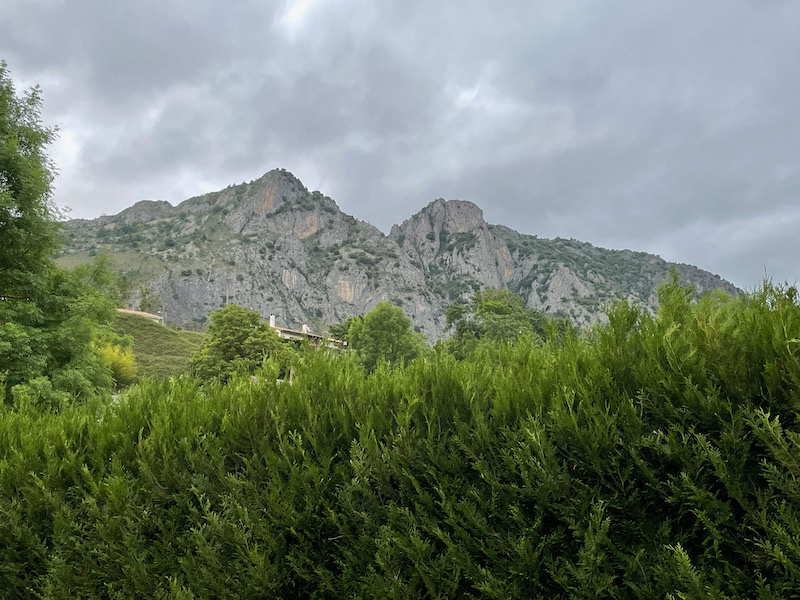

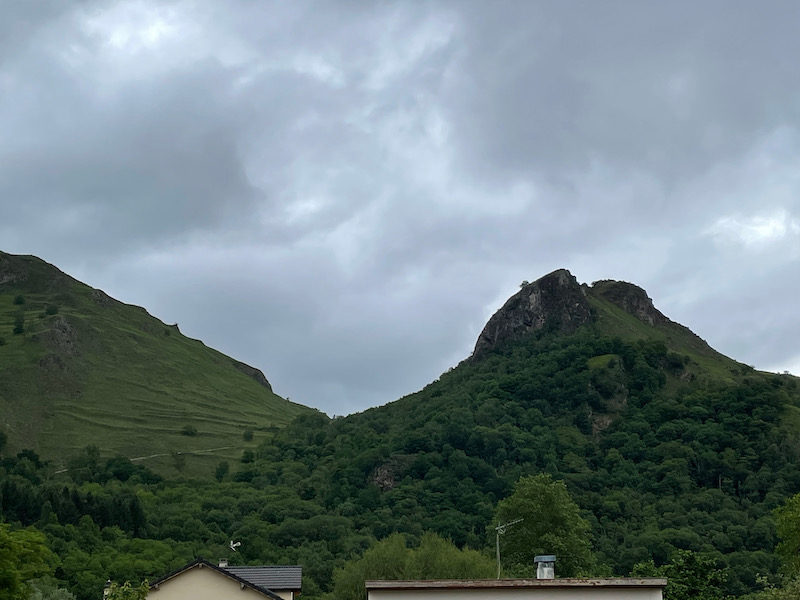
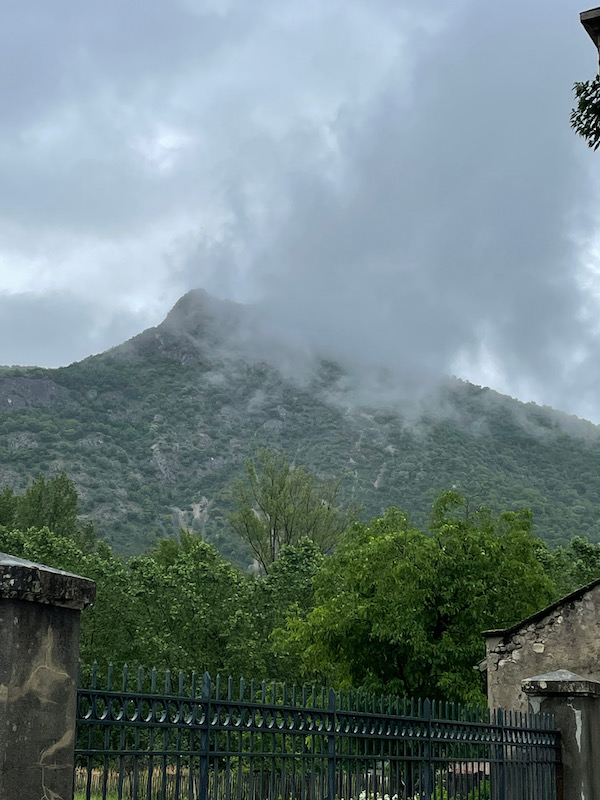
There are quite a number of caves in the Pyrenees, and we had planned this trip so that we could visit one of them. In general, dogs are not allowed and so we tend to stay over 2 nights so that we can leave Lucy in the hotel or B&B room while we visit the cave. This trip, we decided to visit the Cave at Niaux. The Niaux cave's system is complex and has a combined length of almost 9 miles of underground passages and chambers. It is famous for a set of black-outlined style cave drawings that are typical of the classic Magdalenian period, between 17,000 and 11,000 years ago.
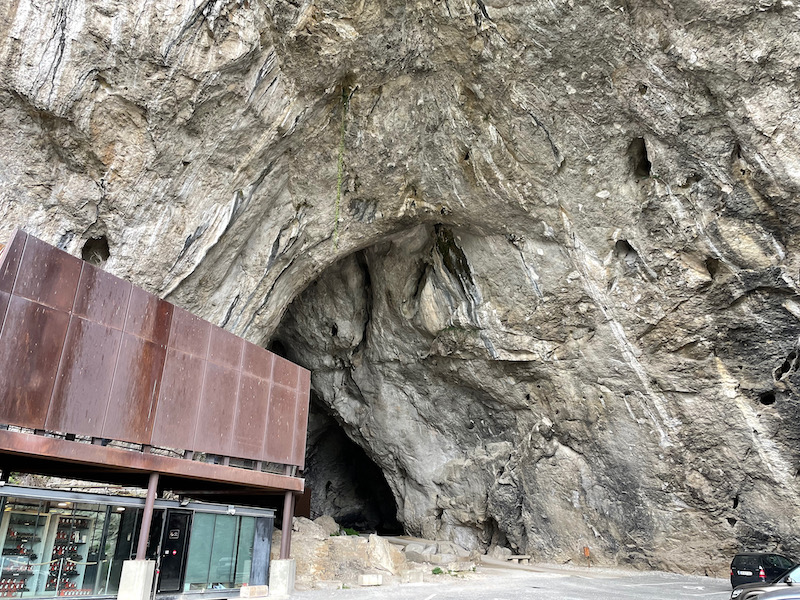
We took a guided flashlight tour, as the cave has no lighting. There are also NO pictures at all allowed, so what you will see in the pictures below are pictures of pictures that were on the informational panels outside of the cave. But this is really the only way to show what we were able to see. The drawings were identified as prehistoric cave drawings in the early 1900's (some were done with charcoal and were able to be carbon-dated). Here you can see mostly bison (the dark part is the arm of a tour guide as he points out certain characteristics of the drawings). There are horses, bison, and ibex drawings, as well as some geometric things, like the red things on the bison that almost look like duck feet. The second picture shows a horse (the main animal) with a little Ibex above (you can tell by the curved horns).
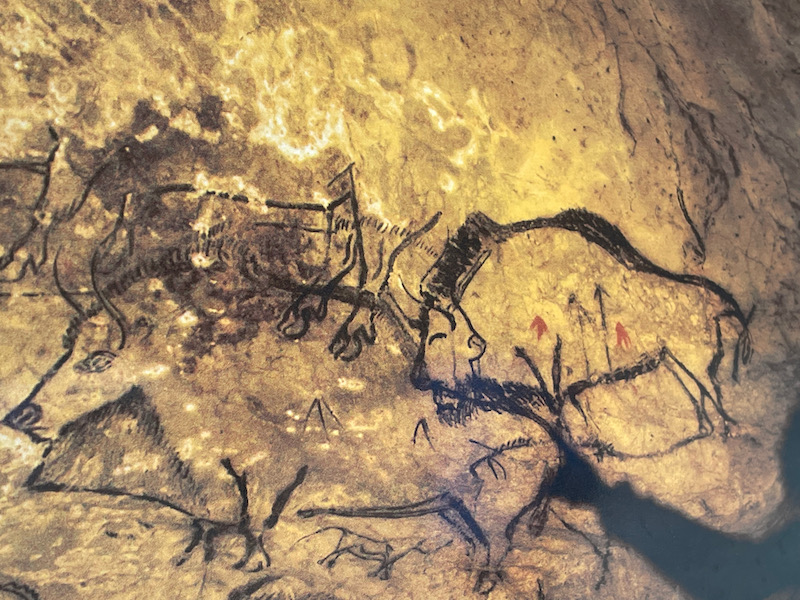

Here is one of the most impressive bison drawings, the face is very detailed and even looks like the bison is smiling.

And no trip would be complete without a church! This one is the Chapelle of Notre Dame de Sabart. A legend attributes the construction to Charlemagne following an apparition, the discovery of a statue, and a victory over the Saracens in 778. The information inside the church stated that the pillars and arches date from the 9th century when the first chapel here was built. It was deserted and remained empty for several years after the Wars of Religion, and returned to being a place of worship in 1652. In 1794, after the French Revolution, it was changed into a stable before being purchased again by the city residents.

Here you can see the 9th century stone pillars (the first ones) and then the more recent pillars and arches (the painted ones).
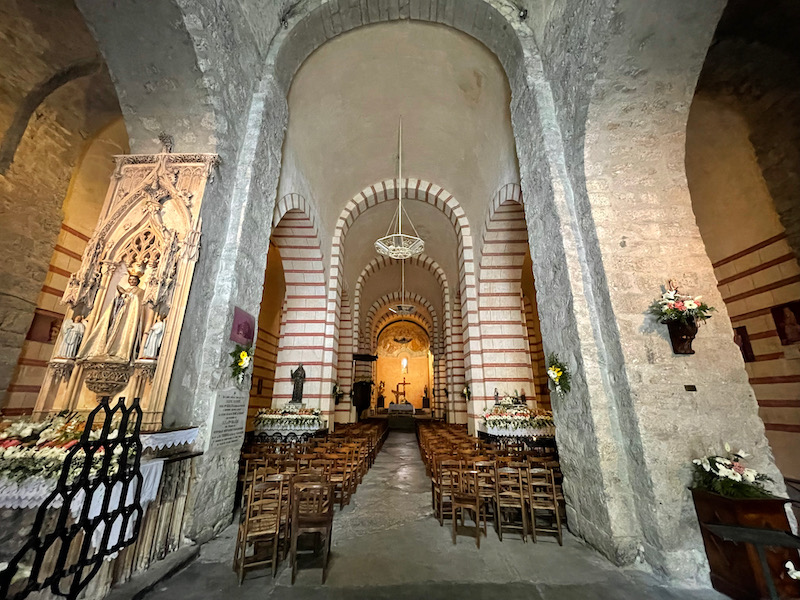
There are 2 side chapels on either side of the choir, and each has paintings in a cupola. As you can see from the pictures, they aren't in very good shape.
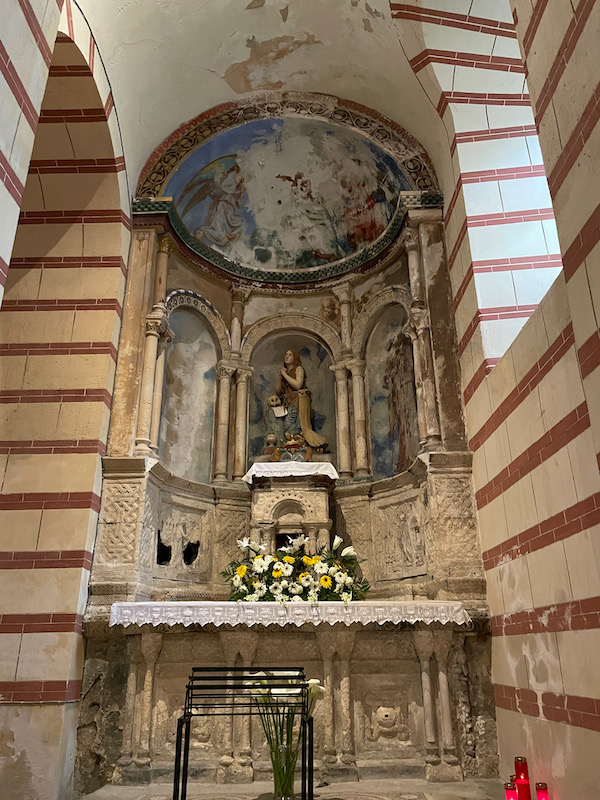

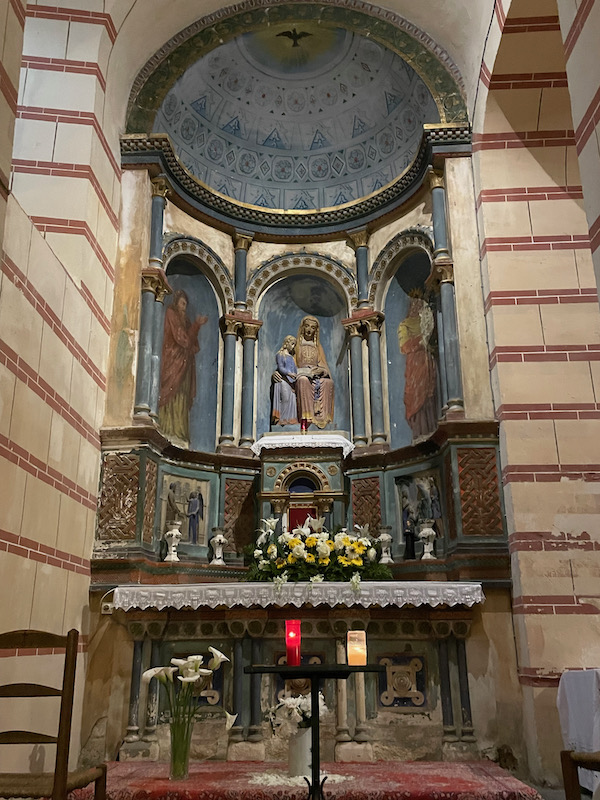
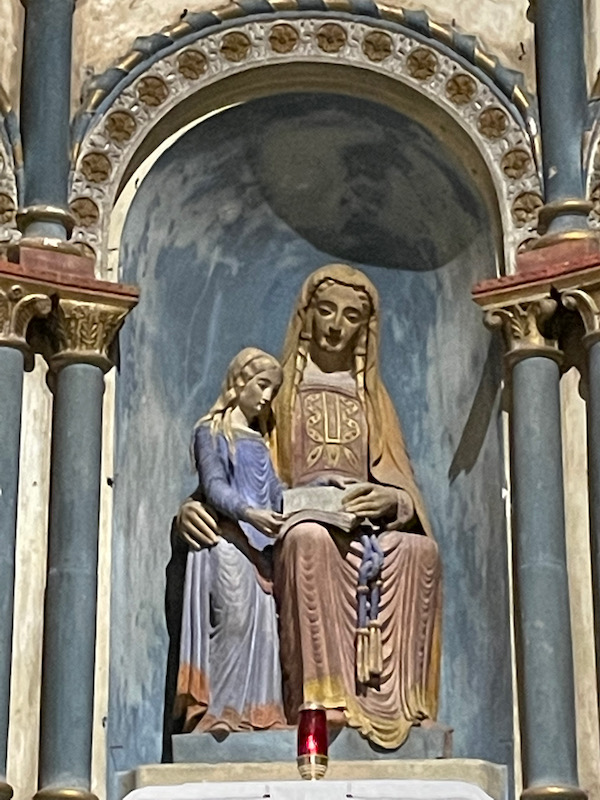
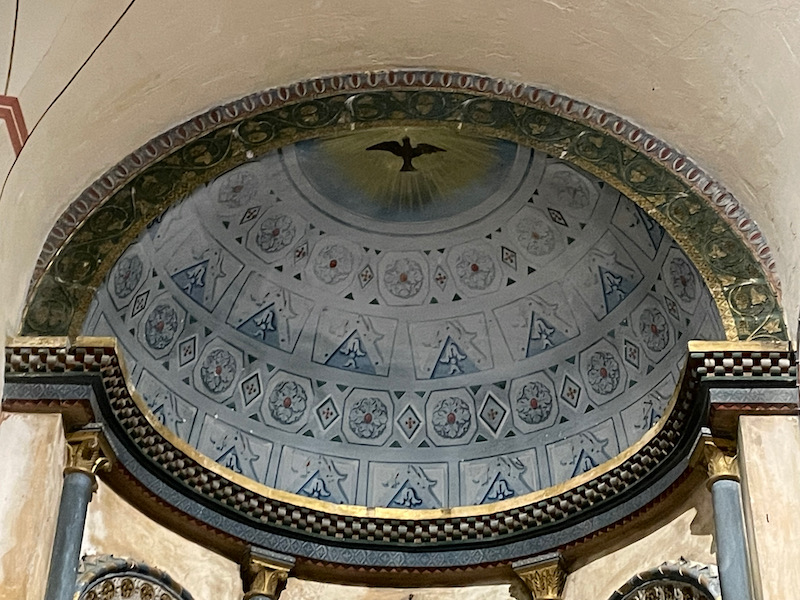
The painting in the cupola of the choir is in much better shape and dates from the end of the 17th century, showing the crowning of the Virgin.

This stained glass window depicts the apparition of the Lady and the victory of Charlemagne. This one dates only from the 1901 restoration. While I didn't get a picture of them, there are 2 stained glass windows that are from the 13th century and are the oldest preserved medieval stained glass windows that have been preserved in the South of France.

The wooden statue of Notre Dame de Sabart dates from the Renaissance. An interesting point on this is that the information card in the church says that only the hands and head are actually sculpted in wood.
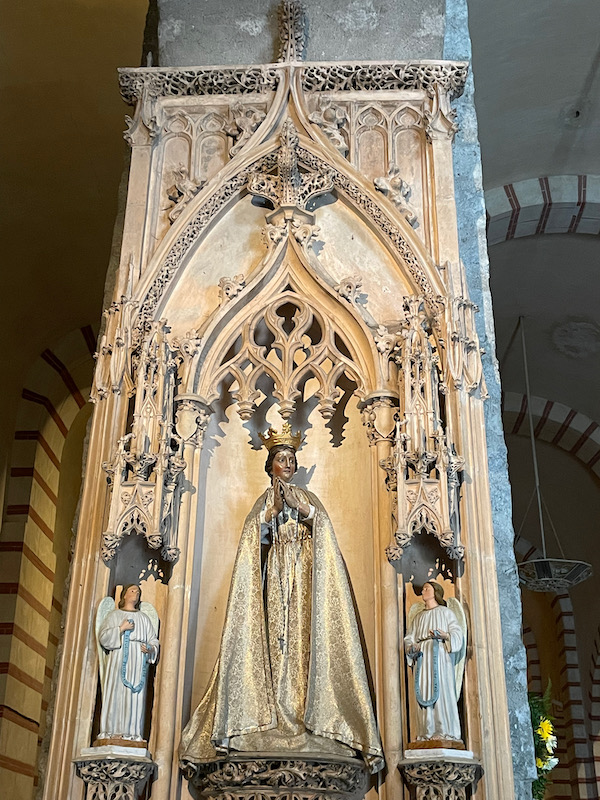
Our only really rainy day was on our way back. We stopped at the village of Roquefixade and took one of the marked walking routes. This one went up to the ruins of another Cathar castle, this one the Chateau de Roquefixade. It may be difficult to tell, but there *ARE* some ruins up on that hill behind the clouds! I pulled a picture from the Internet which is from a similar angle ... if you look closely at the first picture, you can see the darker outline of the wall that you can see in the 2nd picture.
